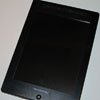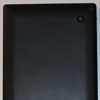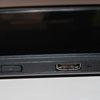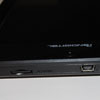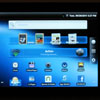Pandigital Planet Review
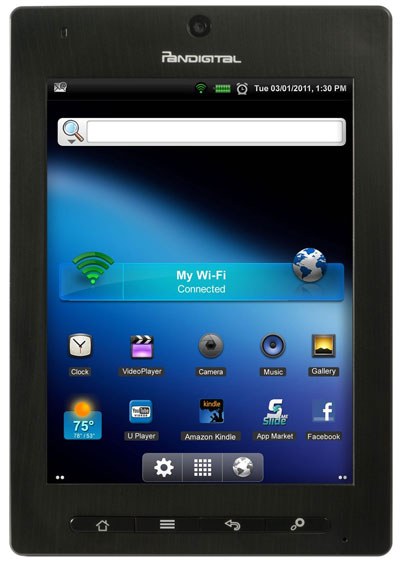
Overview
The Pandigital Planet is one of several new budget tablets and ereaders from Pandigital. It comes in at least two different variations. The particular model for this review comes with the Kindle for Android ereading app (at least it did initially).
The other version is more widely available and comes with the Nook for Android app pre-installed. Other than the pre-installed apps, both Pandigital Planets are exactly the same. Most likely the Kindle version is sold in Canada in addition to the US since the Kindle Store is open to Canada and the Barnes and Noble ebook store is not.
| Quick Review: Pandigital Planet | |
|---|---|
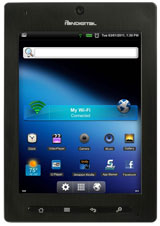 | Pros
|
Cons
| |
| Verdict
For the price it is a decent budget Android tablet and ereader, but for a little more you can get something with better hardware. | |
| Price: $129 at Amazon | |
Hardware and Software
The Pandigital Planet is an updated version of the Pandigital Novel from last year. It has the same 7" TFT LCD display with an 800 x 600 pixel resolution. Fortunately the Planet has an upgraded touchscreen, called ActiveTouch. It is a resistive screen that supports multi-touch for operations like pinch-zooming. It works much better than regular resistive screens like the Pandigital Novel had, which was downright awful at times.
The Pandigital Planet also comes with several new features that the Novel lacked. It has a mini-HDMI port for connecting to a TV, front and rear facing cameras, USB host capabilities with an adaptor, and it has backlit Android hardware buttons for navigating and for turning pages with the built-in Barnes and Noble app (Nook model).
Unlike the buttons on the Pandigital Nova that are inset slightly and feel somewhat spongy, the buttons on the Planet sit slightly above the frame and have a solid, responsive feel, although like the Nova, they don't always react the first time pressed.
Other features include an upgraded 800MHz processor that is noticeably faster than the Novel's, 2GB internal memory, a microSD card slot (it comes with a 2GB card), built in speaker, microphone, and headphone jack.
When it comes to software, the Pandigital Planet runs on Android 2.2. Pandigital have said that it will be updated to Android 2.3 Gingerbread in the future via firmware update.
In case it isn't obvious, Google apps and Android Market access aren't included out of the box, but you can root the Planet to add them (I'll post a tutorial soon). Otherwise you can get apps from the SlideMe appstore that comes pre-installed; some units may come with the GetJar appstore instead. For newbies, here's a tutorial for installing apps.
Pandigital Planet Video Review
Pandigital Planet with Kindle Android App
As mentioned earlier in the overview, the Pandigital Planet for this review started out as the Kindle model. But after applying a firmware update, the Kindle app disappeared and the Barnes and Noble Nook app appeared, essentially turning the Planet into the Nook model. This actually happened during the first video review. The video also shows the Kindle app in detail if you want to see how it works.
While having a firmware update remove the Kindle app is annoying, it doesn't really make any difference. First off, it was an old version of the Kindle Android app to begin with. Second, you can just re-install the Kindle app using the included SlideMe appstore, but it also uses the old version of the Kindle app, so you might as well just install the newer version with the added features using the Amazon appstore and save yourself the trouble.
The Pandigital Planet Already Reviewed
This is where the Pandigital Planet review turns into the Pandigital Nova review. Since both devices are so similar, the majority of the Planet's features have already been described in detail in the Nova review.
So here's the link to the section of the Pandigital Nova review where the similarities begin. The sections about ereading, PDF files, news and magazines, music, audio, videos, cameras, games, and included apps all apply to the Pandigital Planet.
The only major difference in all those sections is the part about videos. The Planet plays NetFlix without the odd sound sync problems, but does lag sometimes where the Nova does not. It's not too annoying and seems to get better after the first few minutes or so. The other difference is that the Planet has a mini-HDMI port instead a micro-HDMI port. When comparing my two units, the Planet's mini-HDMI port works much better; the Nova's is very touchy and often disconnects easily.
Pandigital Planet vs Pandigital Nova
The Pandigital Planet and Pandigital Nova are so similar that it makes you wonder why Pandigital would make both of them. Currently the Nova runs a newer version of Android, supposedly the Planet will be getting it as well. The other difference is that the Nova comes with 2x more memory. Since they support microSD cards up to 32GB that doesn't really make much difference anyway, plus you can save apps to the SD card to keep the internal memory freed up.
The main difference when comparing my two units is the build quality. The Nova's plastic body makes more creaking noises when handled, the buttons feel more spongy, and the micro-HDMI port is touchy. Given that, I'd say the Planet is just slightly better, despite its shortcomings in memory and the earlier OS. Of course the build differences could just be these two particular units.
Conclusion
Given the combination of features and price, the Pandigital Planet is a fairly attractive budget tablet, especially given the open Android OS and the fact that it can be rooted to add the Android Market.
But with all the other budget tablets coming out this fall, it is going to have to fall in price to the sub $150 range to stay competitive because for $30-$50 more you can get something with a faster processor, a higher resolution capacitive screen, and other upgrades. The Nook Color, for instance, is a better tablet with a N2A card installed, but it lacks the HDMI port and cameras that the Planet has. The upcoming Kindle Tablet is going to be stiff competition too.
Pandigital Planet Specs
- 7" 800×600 TFT LCD ActiveTouch multi-touch screen
- CPU: 800 MHz processor
- 2GB storage, 256 MB RAM memory
- MicroSD card slot for cards up to 32GB
- Mini USB Host/OTG
- Wireless: WiFi (802.11 b/g/n)
- 0.3MP VGA forward-facing camera
- 1.3MP rear-facing camera
- Speaker, headphone jack, and microphone
- Micro HDMI output
- Ambient light sensor
- 2 axis accelerometer
- Power button, volume buttons, backlit Android buttons
- Dimensions: 7.6" x 5.19" x 0.5"
- Weight: 13.6 ounces


